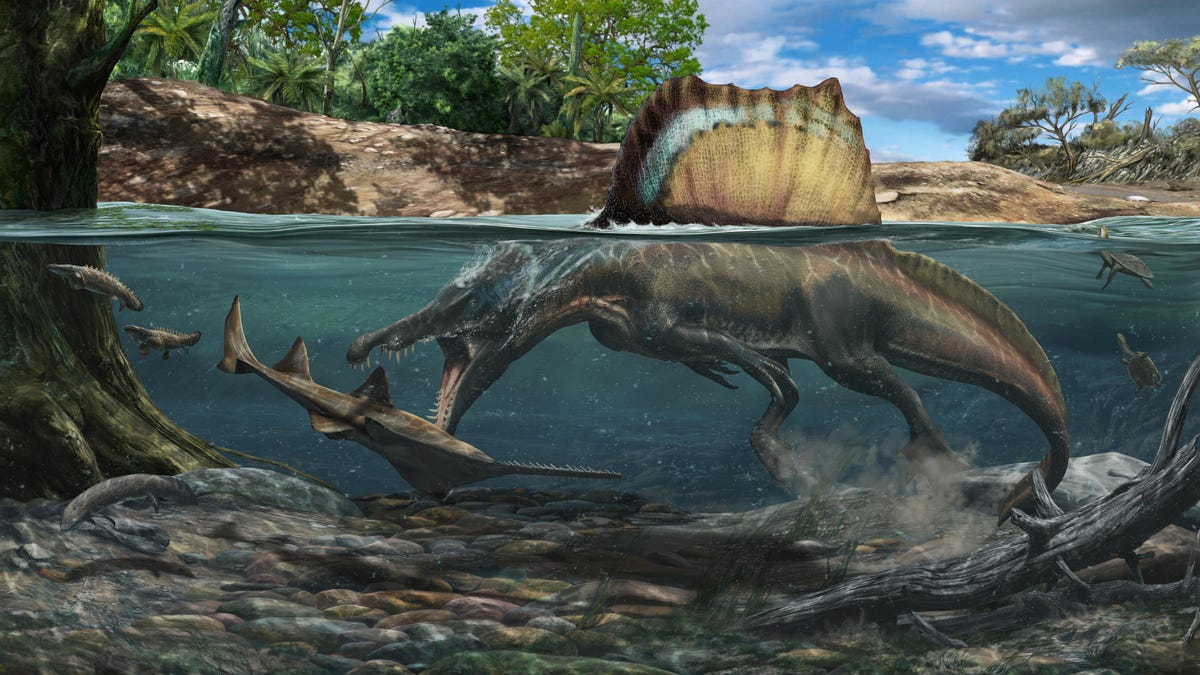'River Monster' Spinosaurus Adapted to a Life Aquatic, New Study Shows
Bone density studies show spinosaurids adapted to a life in the water.

A depiction of a spinosaurus hunting a large onchopristis underwater in the Kem Kem beds of Morocco.
More evidence that spinosaurids lived an aquatic life has been presented in a new paper, with scientists now looking at the dinosaur's bone density.
Recent research has pointed to Spinosaurus potentially being a water-dwelling beast: Paddle-like tail bones and teeth found in river deposits pointed to a life aquatic, with researchers dubbing the dino a "river monster." However, there has been heated debate over whether it lived primarily on land or in the water.
Even when creatures aren't obviously built for an underwater lifestyle -- like hippos, which have no flippers or fins -- bone density can be used to determine whether they evolved for life in rivers or oceans.Denser bones provide a greater level of control over buoyancy when in the water.
In the new study, Matteo Fabbri of the Field Museum of Natural History in Chicago compared the density of rib and leg bones from 380 different animals including dinosaurs, mammals, lizards, crocodiles and birds.
"We find strong support for aquatic habits in spinosaurids," the paper concluded, citing "a marked increase in bone density, which precedes the evolution of more conspicuous anatomical modifications, a pattern also observed in other aquatic reptiles and mammals."
While spinosaurids originally lived on land, the bone density data suggests they started adapting to aquatic environments during the Early Cretaceous around 145 million to 100 million years ago, after diverging from other large carnivores in the Early Jurassic around 200 million to 146 million years ago.

